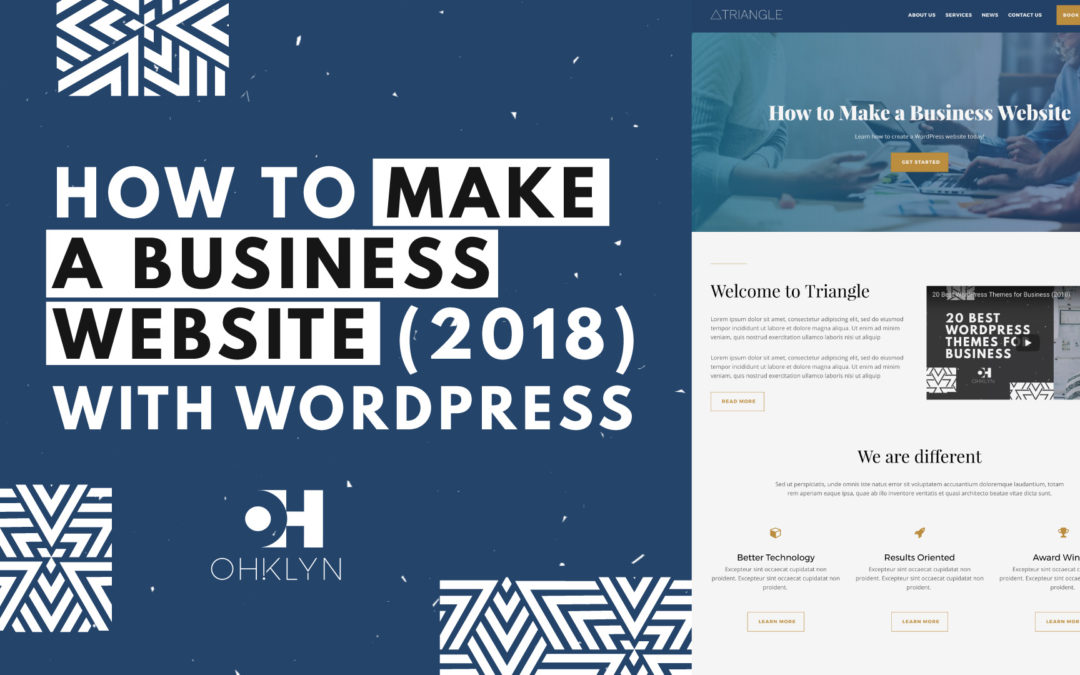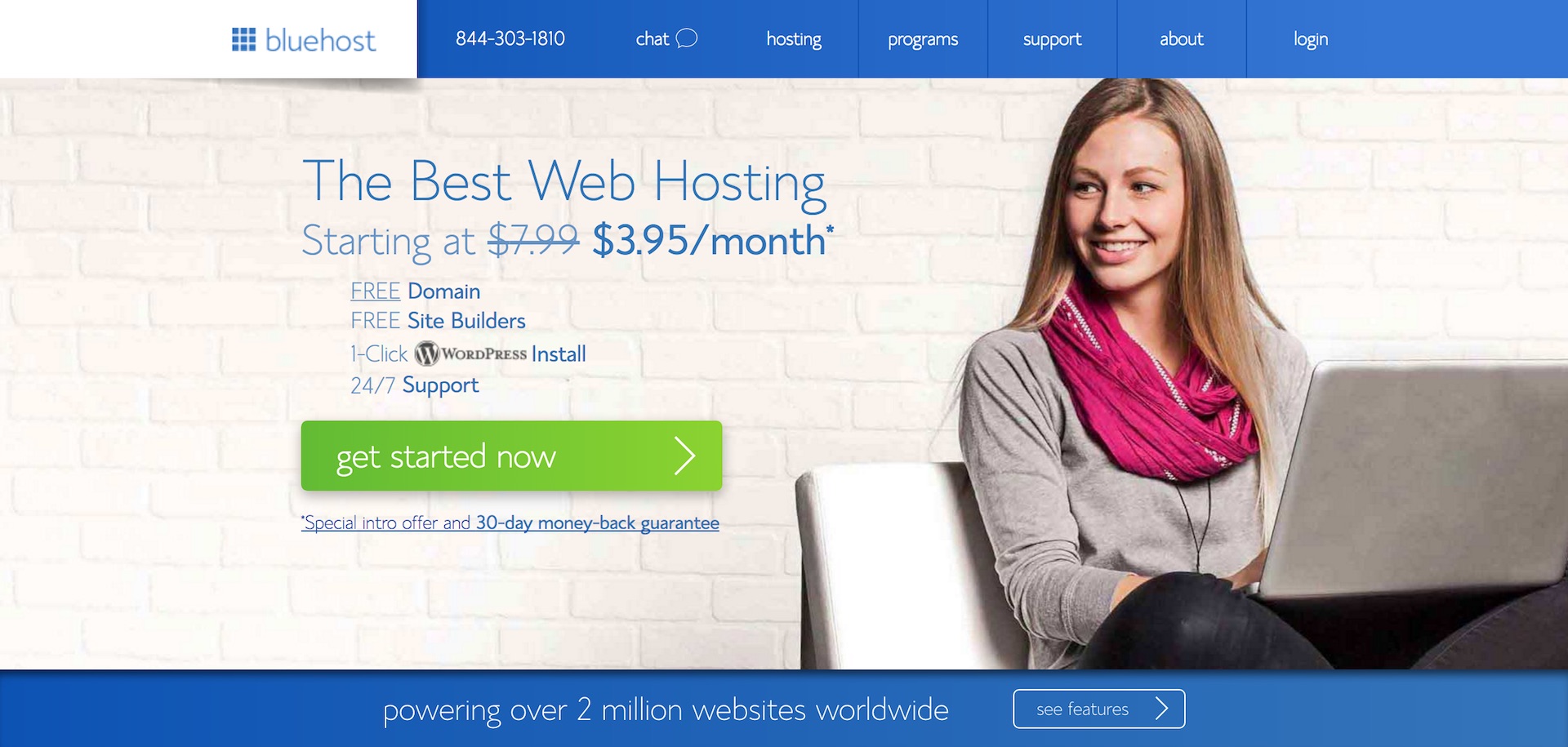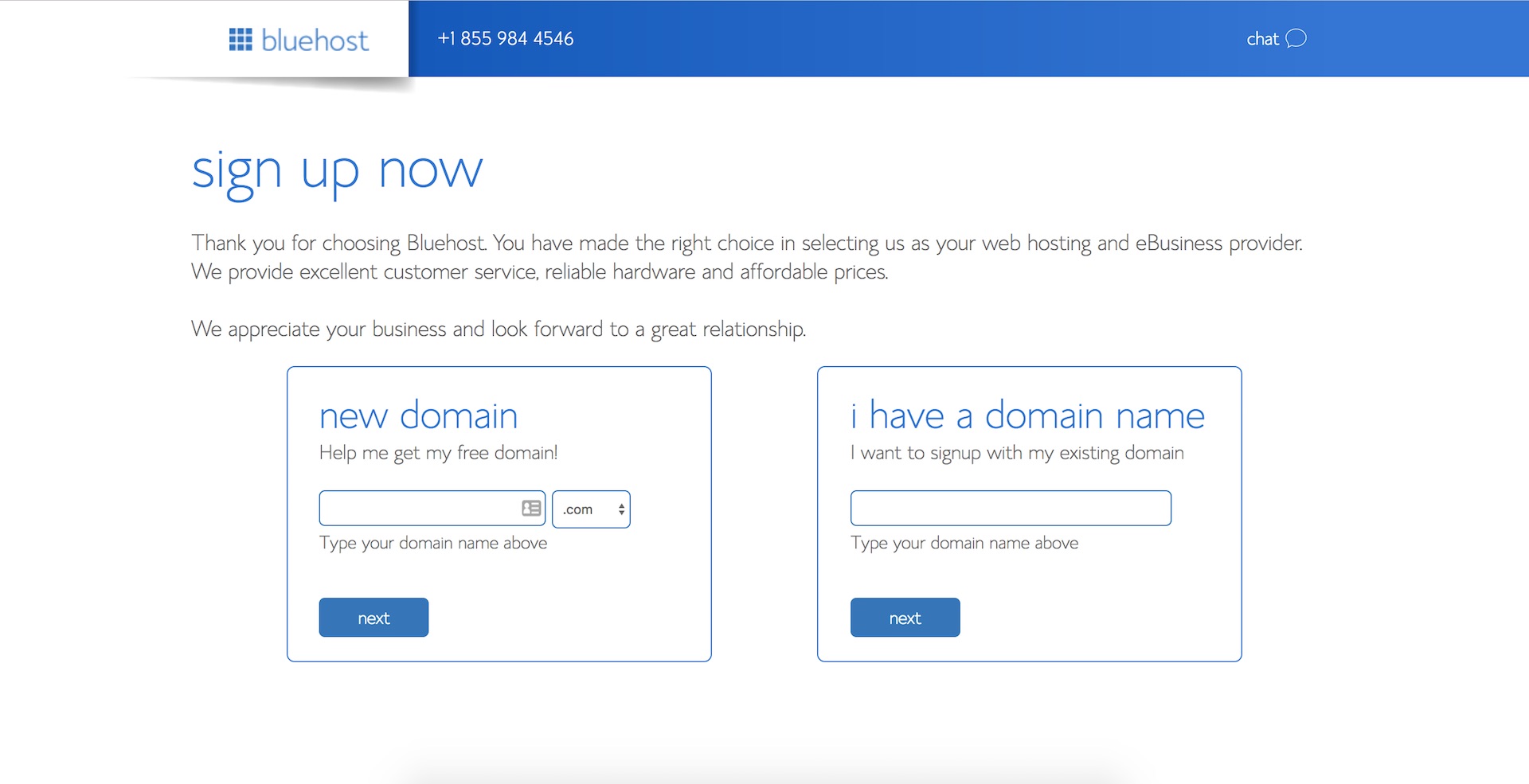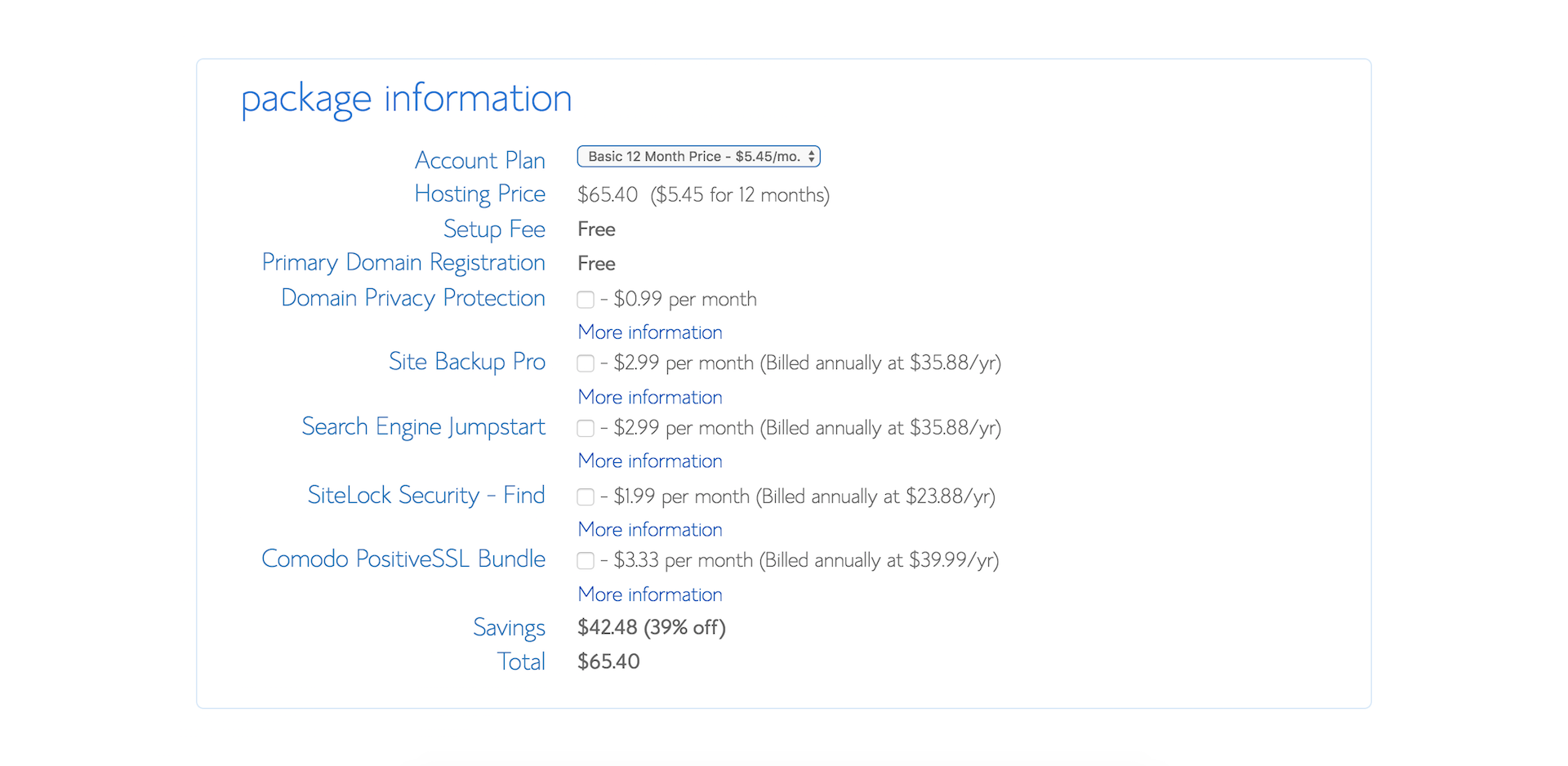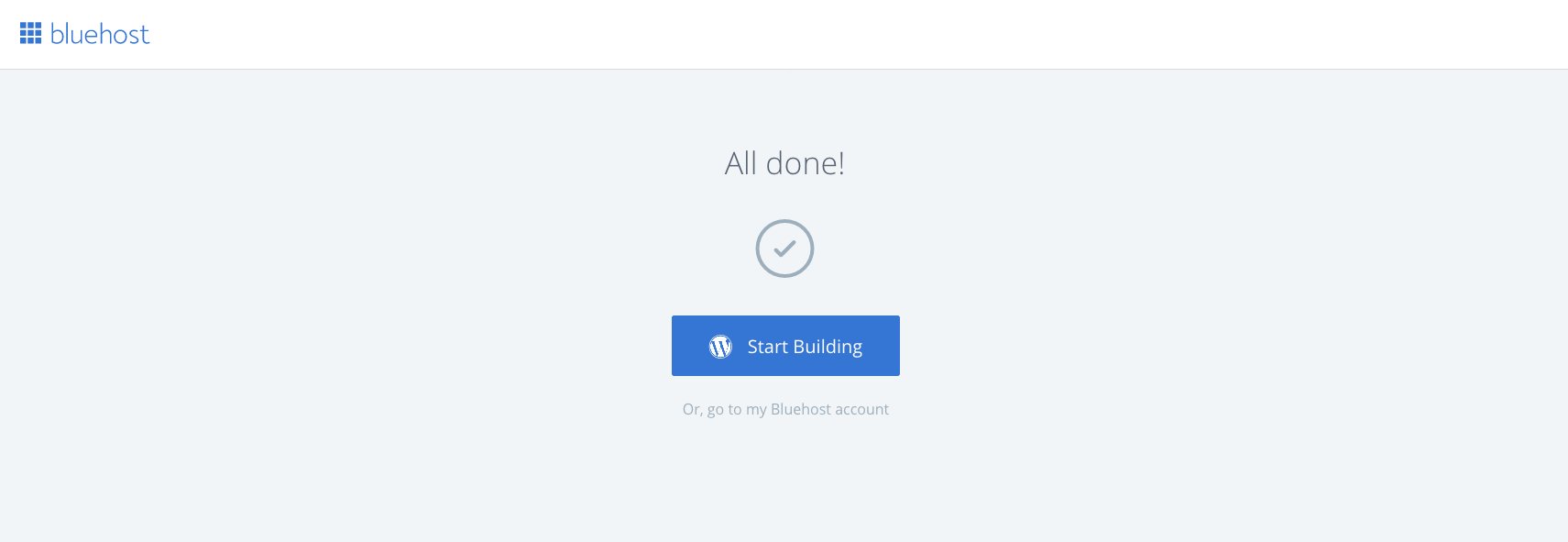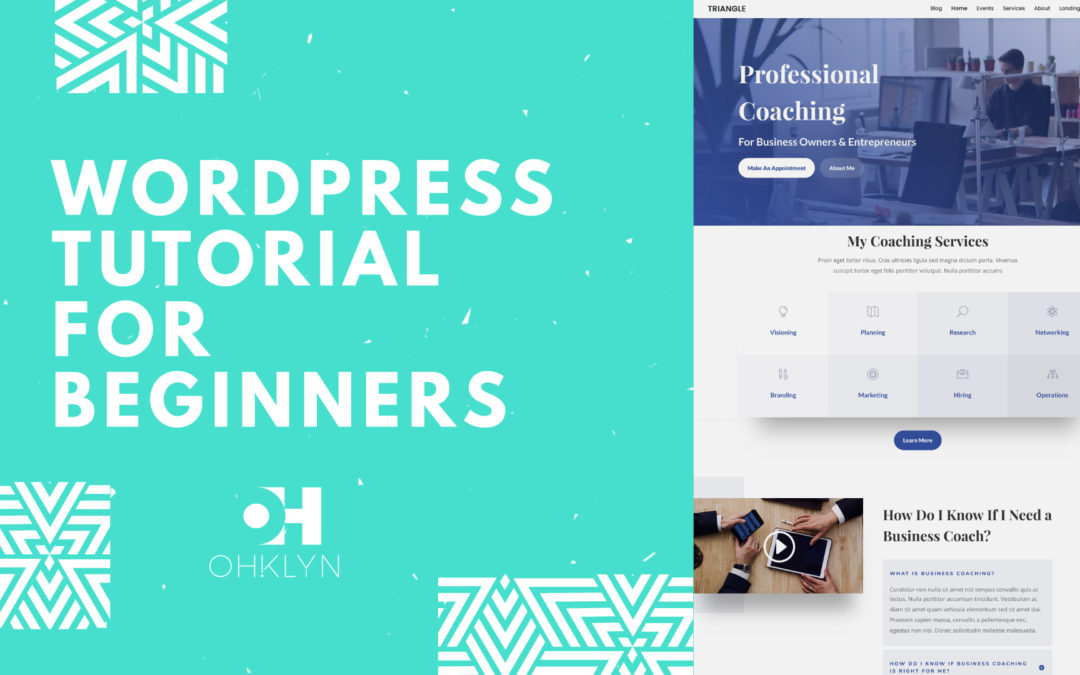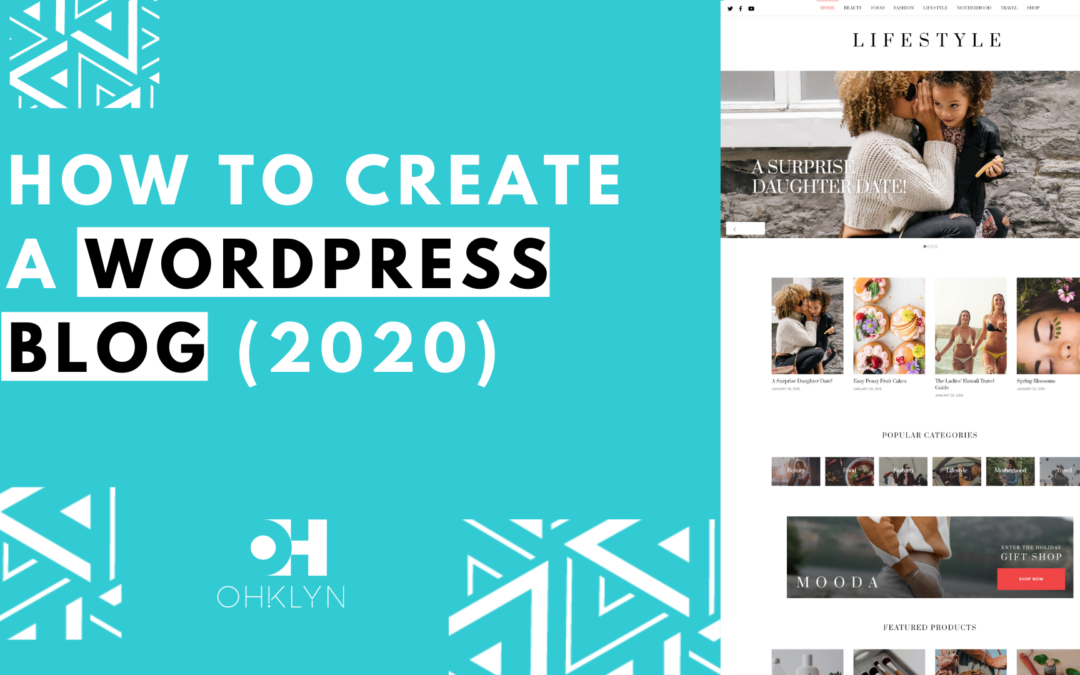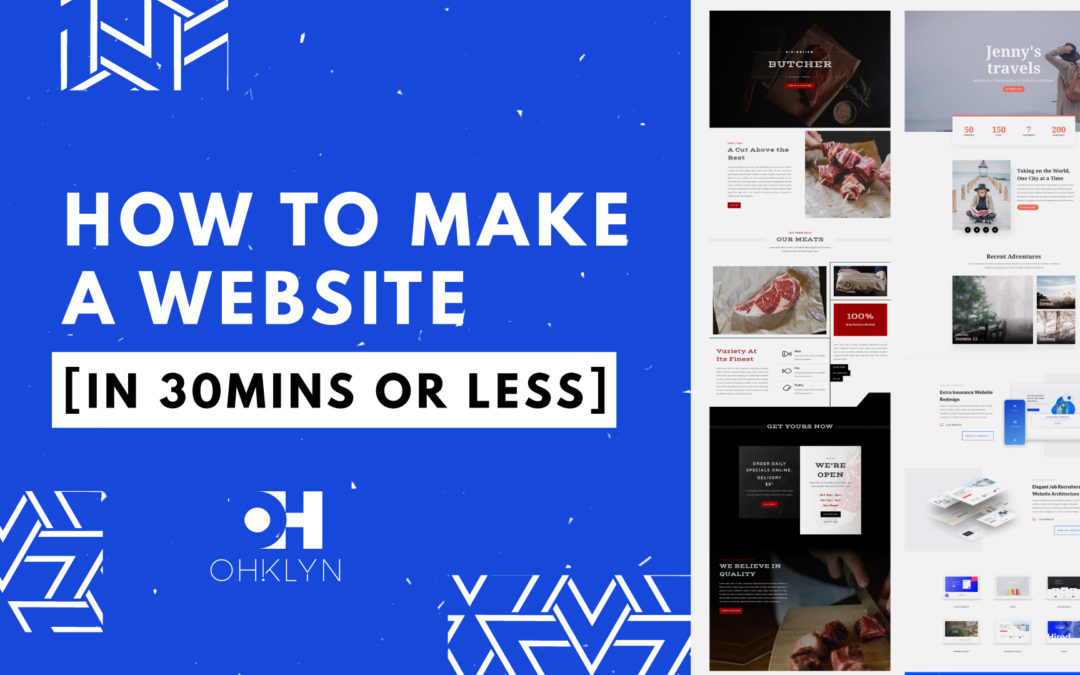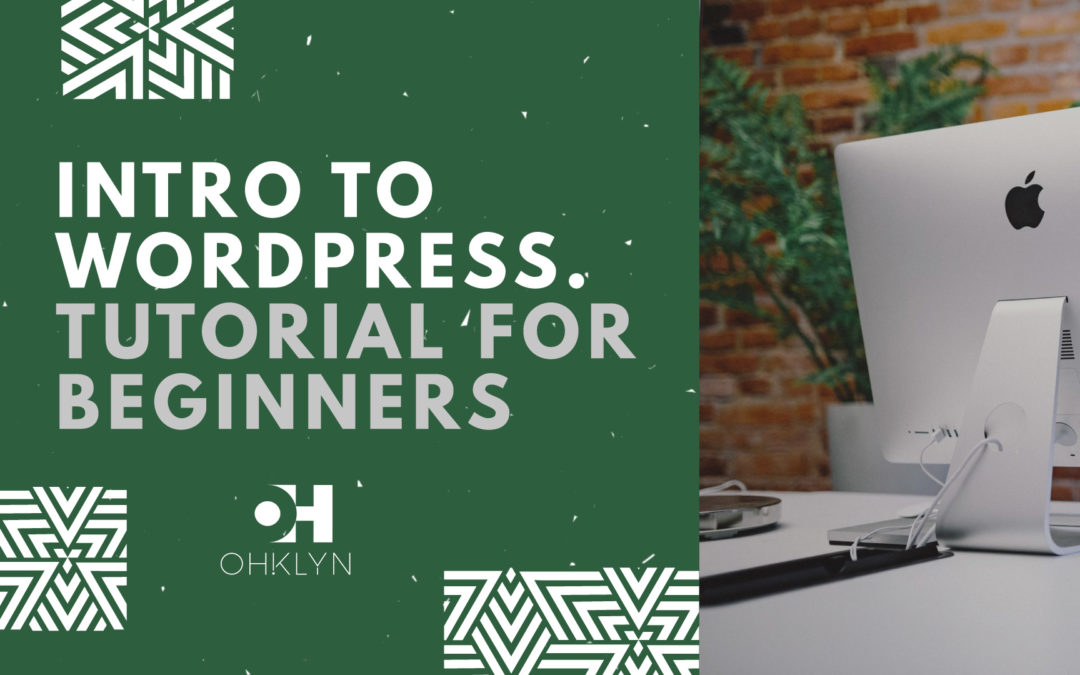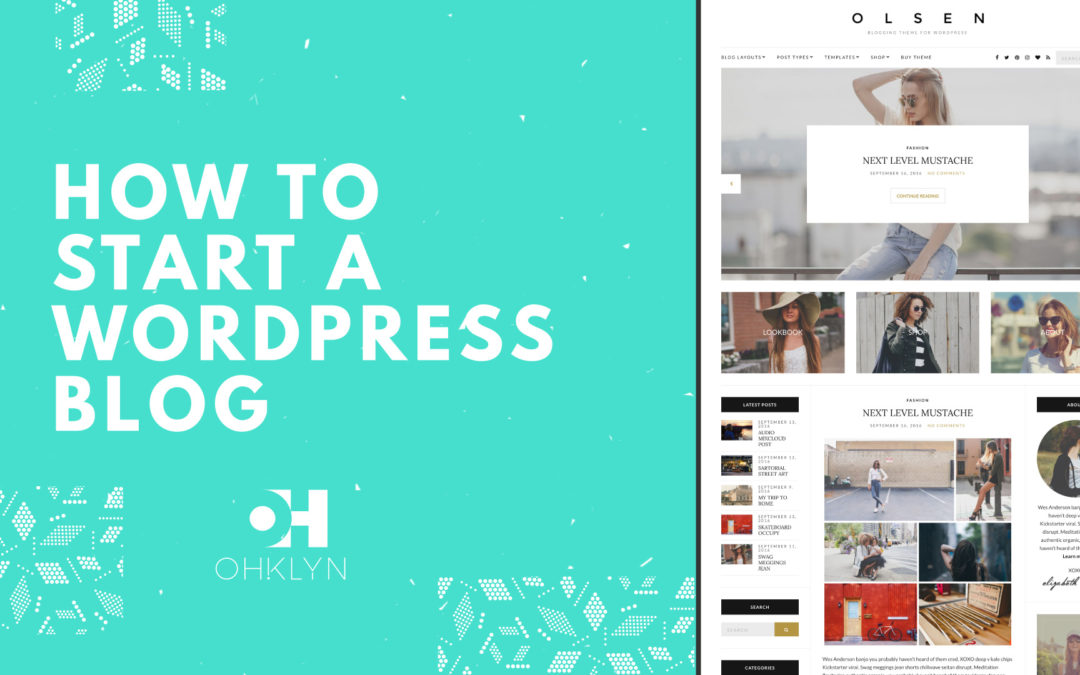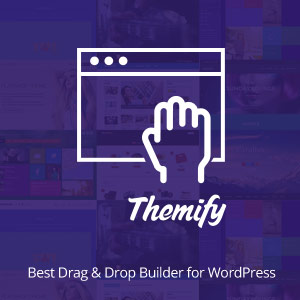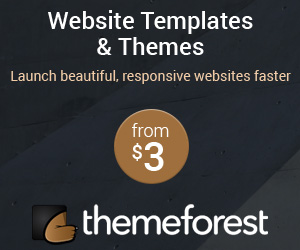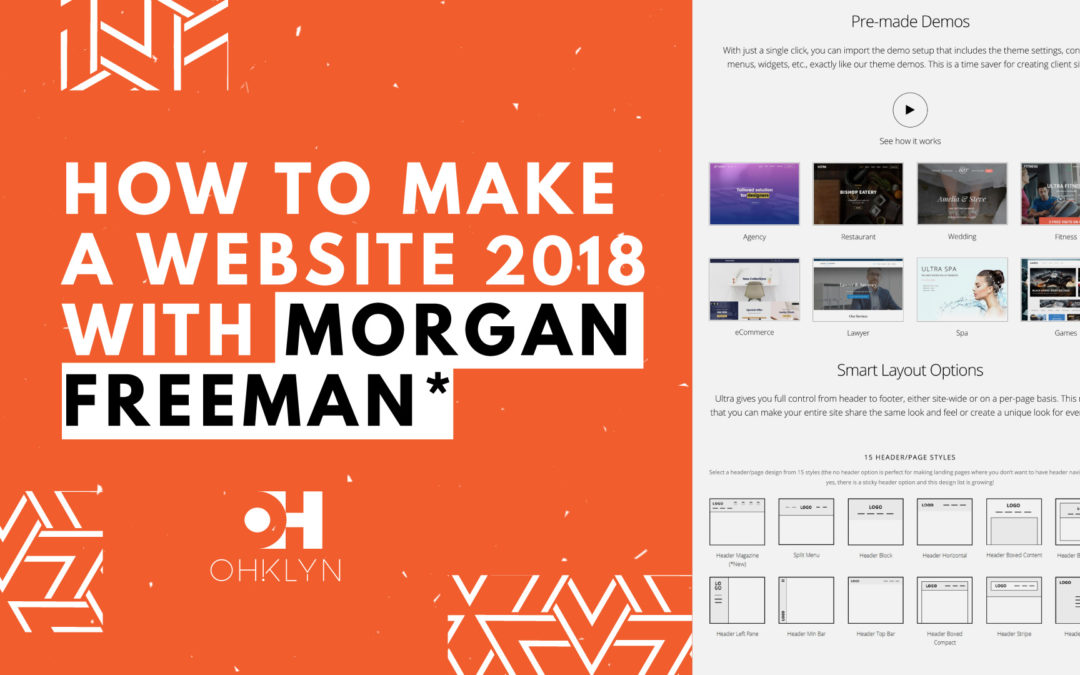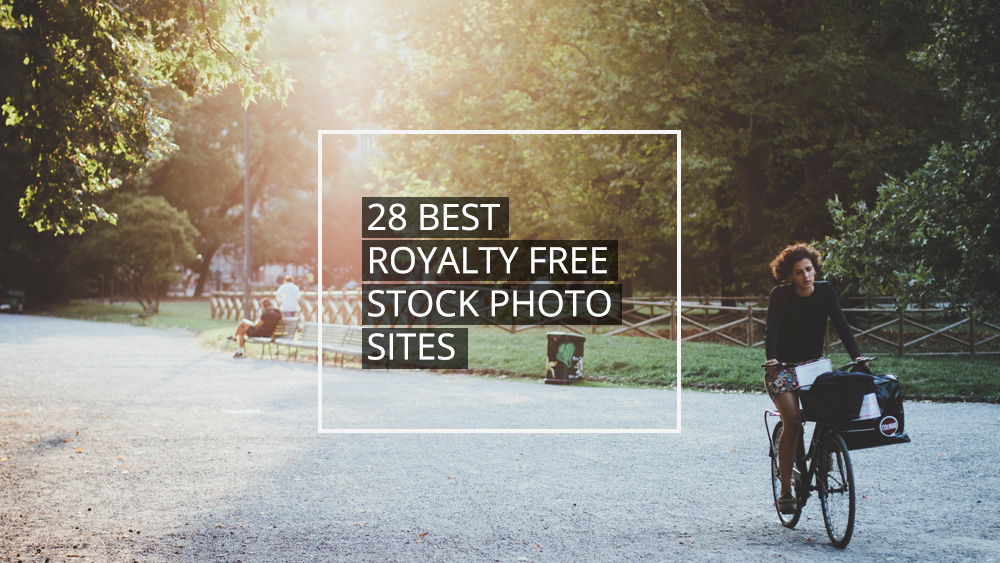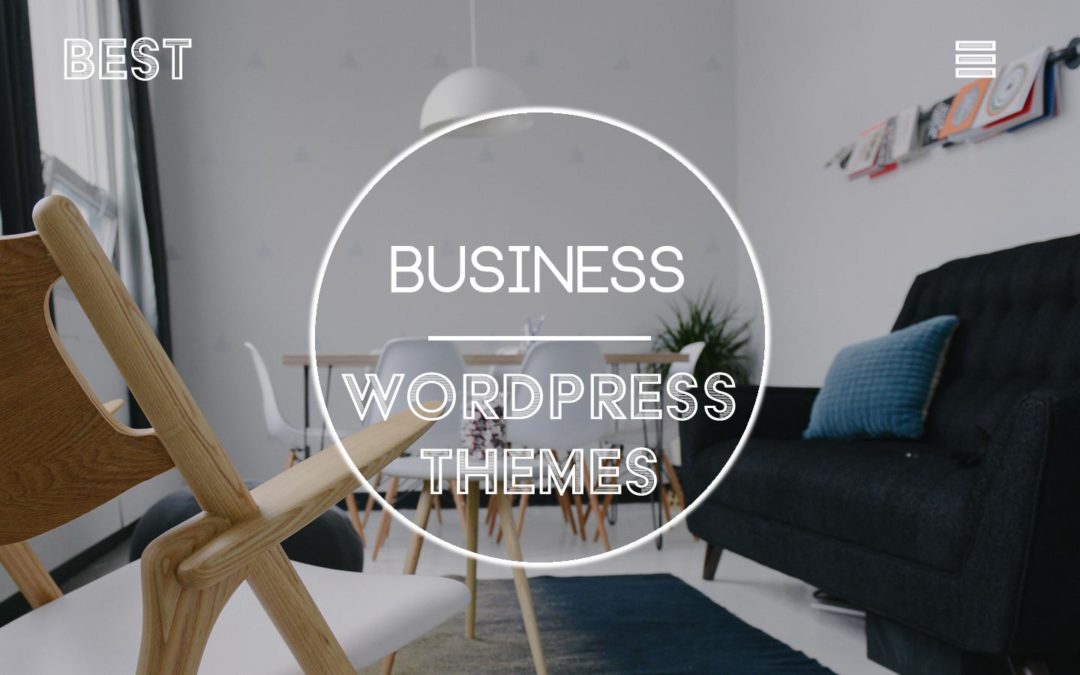In this article, we’ll show you how to make a business website for 2018 and 2019. The right website will generate new leads, enhance your credibility, and become an asset that you own and can leverage to showcase your business in the best light. For this business website tutorial, we’ll use WordPress and show you how to create a website that would typically cost two to three thousand dollars for less than a few of hundred dollars.
A well-designed website will stay current for at least two years, and for this step-by-step tutorial, we’ll use a premium WordPress theme to build a fully responsive website that looks great on all devices without needing to have any coding or design experience. However, if you do have some experience, you’ll be able to use those skills to create the exact website that you want.
BLUEHOST DISCOUNTULTRA WORDPRESS THEME
Here’s what we’ll cover:
- Preparation
- How to register your domain, set up hosting, and install WordPress
- Overview of WordPress
- How to upload and install your WordPress theme
- How to Customize your website
- Next Steps
The website we’ll create is SEO friendly, features an optimized UX design, and includes an intuitive, beginner friendly, drag and drop page builder. To access a discount code that gives you 30% off the Ultra theme that we’ll use for this tutorial, subscribe to the OHKLYN newsletter and you will be sent a welcome email with the discount code included.
Preparation
The biggest mistake beginners make, is failing to plan out what they want their website to look like before getting started. By taking a couple of moments to plan out how you want your website to look, you’ll save yourself a bunch of time and create a much better result.
Introduction to website and user experience (UX) design
User experience or UX design is the process of planning the content and structure of your website to optimize the user experience. A solid UX design will drive user engagement and improve conversions on your website, regardless of whether that’s generating leads, making sales, or whatever your objective is.
For this, take out a sheet of paper, or open your favorite drawing tool. Then sketch out the pages you want to include on your website and how they relate to each other. Some of our favorite free tools for this include sketch.io, and if you need to collaborate with others, check out InVision.
The most common include a:
- Homepage
- About page
- Services page
- Gallery or client work page
- Blog page (including the individual post pages, and category pages),
- And a privacy or terms of use page.
Next, for each page, create a rough guide for what will be on the page. The best way to think about a web page is in terms of rows and columns, or as a grid. Plan what you want to include in each page in terms of headers, text, images, videos, and other elements. Later, we’ll go through how to build out your pages using a beginner friendly drag and drop page builder.
Consider:
- Does the flow of information you’re presenting make sense?
- Does it logically take them through a process, or tell a story?
Introduction to brand design and content planning
Once you’ve decided on the pages to include on your site and sketched out the rough layouts for each page, start putting together the content you want to include. This will include the text or copy for each page, images, and other elements such as CTAs and navigation.
Sourcing great images for your website will an important aspect, to assist with this check out our Best royalty free stock photo sites article. Here you will find a list of free high-quality photo sites where you can download images that you can use on your website for free.
From a branding perspective, you will need:
- A logo,
- A Favicon (which is the icon that appears in the browser tab when a user visits your website),
- And your brand color palette, including the hexadecimal color codes. We’ll show you how to customize your website with these colors later in this tutorial.
There are a number of great tools like paletton.com, Adobe color, or color-hex.com that can be useful.
If you need help with copywriting or graphic design, consider using a third-party platform like:
Setting a budget for your website
Being a business owner, budgeting isn’t a new concept. As we said earlier we’ll show you how to create a website that would typically cost two to three thousand dollars if you were paying a web designer or agency. You’ll be able to do this with a small budget of around $150 – $300, depending on the options you choose.
This will include things like:
- Your website hosting: at about $3 – $10 per month depending on your hosting term
- A Premium WordPress theme: which is typically around $50 – $100
- Premium images, if you want to use them
- Or, a graphic designer, if you want to create some custom graphics
How to register your domain, set up hosting, and install WordPress
The first step is to register your domain (if you haven’t already), set up your website hosting account, and install WordPress. So we’re all on the same page, let me quickly explain what they are.
Your domain, or URL – is the web address for your website, and is what users will type into their browsers to access your site. For OHKLYN it’s OHKLYN.com. Pick something that works for you.
Hosting, is what allows your website to be accessible to users 24/7. It’s the process of storing the content and data for your website on a web server and serving it to users.
For this tutorial, we’ll walk you through getting started with Bluehost, as we believe it’s the best option for beginners.
Ok, so let’s go through the steps for setting up hosting for your website and registering your free domain.
Bluehost – Getting started
Steps to register your domain & set up hosting:
- Head to the bluehost website (massive hosting discount up to 54% + FREE domain).The free Bluehost domain extensions included are (.com, .online, .site, .website, .space, .tech, .store, .net, .org, .info, .co, .us, .biz, .club).
Note: If you want a specific top level domain (TLD) or country specific domain not listed above, you will need to purchase it through a domain registrar like GoDaddy or CrazyDomains. You will also need to change the domain nameservers or (DNS) records to point at Bluehost’s servers. Here are the steps on how to change domain nameservers to point at bluehost.
- Select ‘get started now’ for the plan you want (shared hosting will be fine for most users & you can always upgrade later).
- Choose the hosting plan that’s right for you, hit ‘select’.
- Either use your existing domain, or type in the domain that you want (it’s free), then hit ‘next’.
- Choose your desired hosting term and domain add-on preferences. We recommend selecting ‘domain privacy protection’ so that the personal information associated with your domain, isn’t publicly available (optional).
- Once you’ve chosen your desired options, enter your personal information, payment details, review the terms of use, and click ‘submit’ to move on to the installing WordPress.
Steps to install WordPress:
One of the reasons we love Bluehost is their easy to use One-click WordPress installation feature. In September 2017, Bluehost made the process of getting started with WordPress even easier. For new domains, WordPress is automatically installed for you so you can start building your site right away.
- When you see the ‘Congratulations’ message, click on login.
- You will be sent a verification email to the nominated email address for the account, which you will need to confirm.
- You can then set your password for your hosting account.
- Once you’ve done that, you will then be given the option to either ‘Start Building’, which will take you to the backend of your WordPress dashboard, or you can select to go to your Bluehost account.
Install WordPress for an existing domain via Bluehost
If you’ve purchased your domain elsewhere, you will need to change the DNS records for your domain via the domain registrar where you purchased your domain. Check out one of our detailed tutorials that walk you through this process:
- How to change GoDaddy nameservers to point at Bluehost
- How to change Domain Name Server (DNS) records to point at Bluehost
Congratulations! You officially have a new website! It’s not much at the moment, but you’re a lot closer than you realize.
If you’re new to WordPress, we’d recommend reviewing our How to use WordPress article which is a free introduction to WordPress tutorial for beginners.
We recommend that you add your free SSL certificate which will encrypt the data on your website. This is good practice as it improves the security of your website, improves your search rankings as Google prefers secure sites, and allows you to take payments on your website as well, in the event that you want to include an online store as part of your website.
Overview of WordPress
Whenever you want to log into your WordPress website, enter your domain and add /wp-admin to the end (i.e example.com/wp-admin). Then enter your username and password that you set up in the prior step. You’ll then be taken to your WordPress dashboard.
The WordPress dashboard or admin panel is broken down into 3 main sections: at the top, we have the WordPress toolbar, the menu or admin menu is located on the left-hand side, and the main admin area is in the middle, where we’ll do most of our work.
We’ll give you a brief overview of each section now – however, for a more detailed overview, watch our free how to use WordPress tutorial, which is an introduction to WordPress for Beginners. This is intended to get you up to speed on the fundamentals of how WordPress works in about an hour.
WordPress toolbar
The WordPress toolbar at the top is dynamic and adjusts the available options depending on which page you’re on, and if you’re viewing the page from the front or backend.
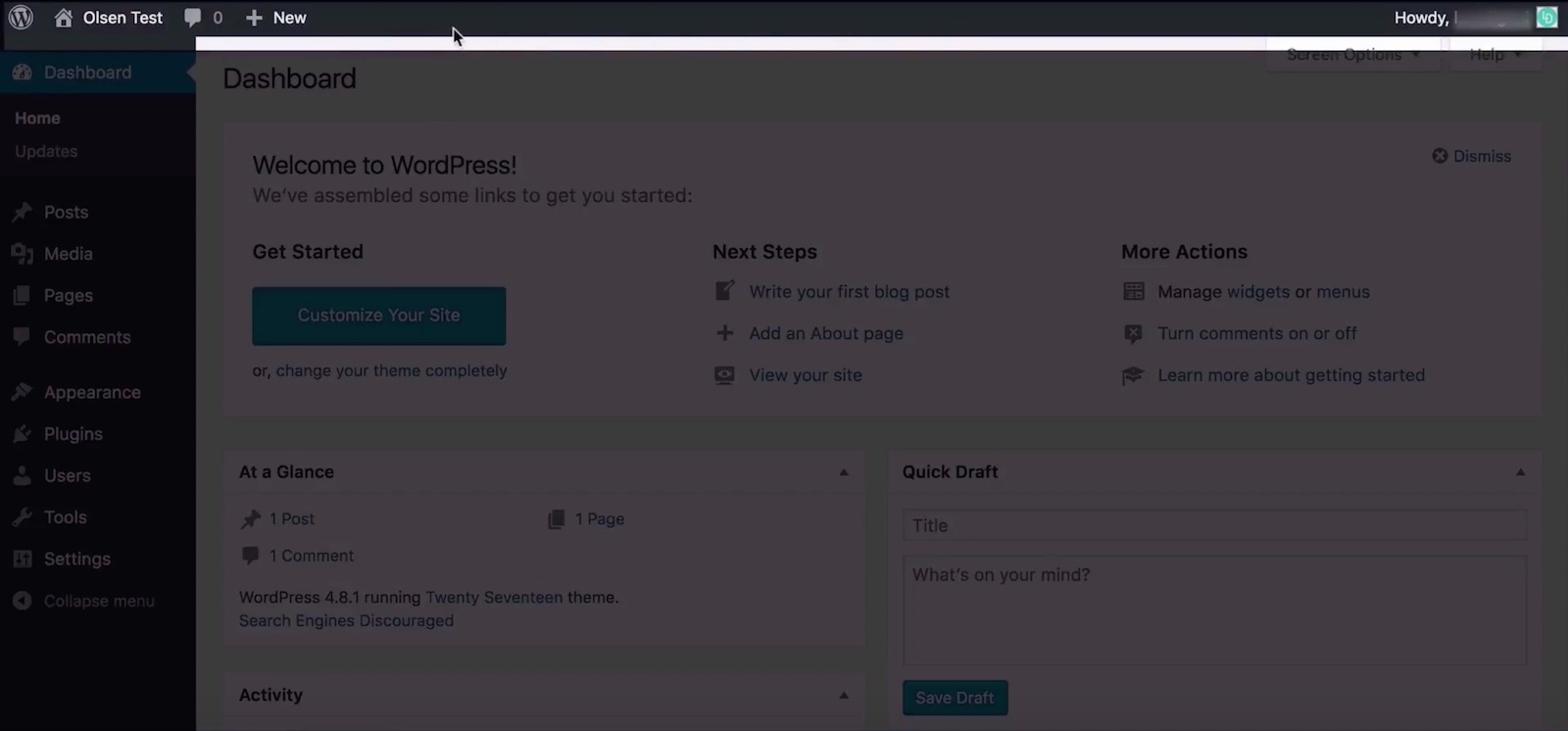
WordPress admin menu
The Admin menu located to the left of your dashboard is separated into 3 main sections, these are: The Dashboard section, the Content Management section, and the Site Administration section.
- The Dashboard section provides easy access to the Dashboard, updates, and additional plugin features.
- The Content Management section is where you create and manage Posts, Pages, Media items, Comments and additional plugin features.
- The Site Administration section is where you configure the design and appearance settings for your website (including selecting the active theme for your website, creating and managing menus, widgets, and customizing your website’s theme). It’s also where we manage plugins, users, control global WordPress settings, and activated theme and plugin extensions like SEO, Social sharing, theme specific settings, and security.
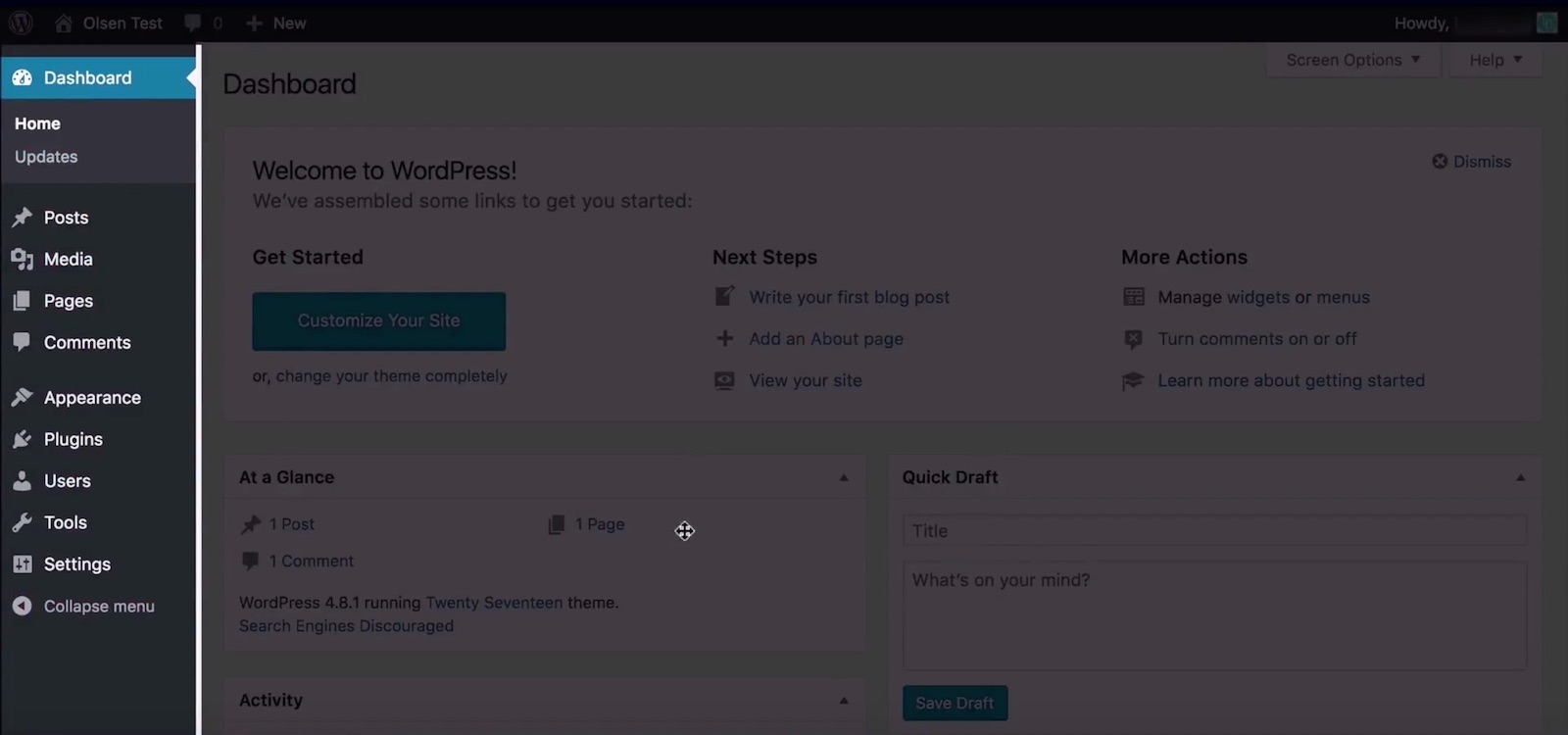
WordPress admin panel
Lastly, the main Admin area serves as our primary workspace, and adjusts depending on what’s selected from the admin menu.
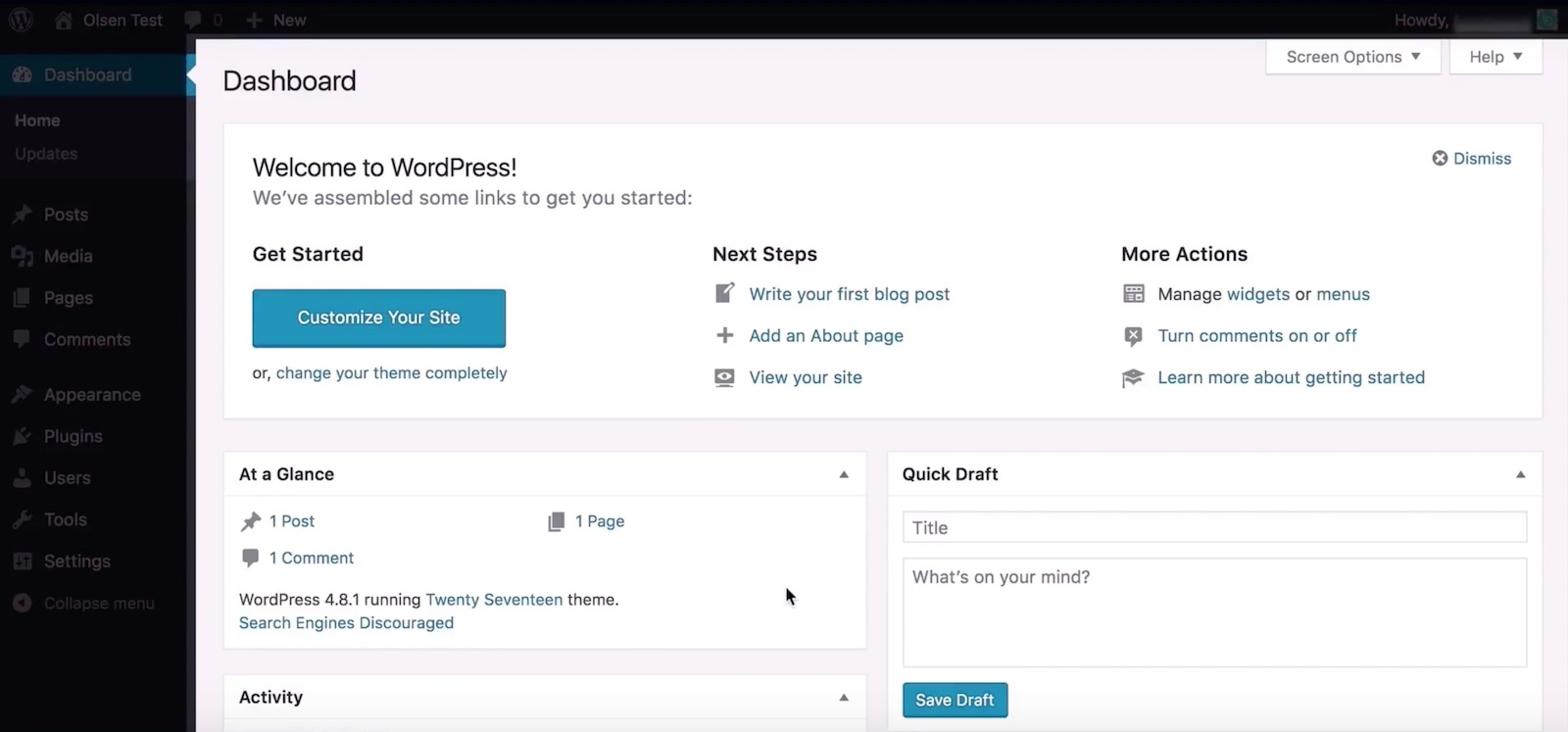
We’ll go through some practical examples for each of these in the coming sections once we upload our theme and start working with content.
Permalink settings
One thing we recommend doing before we move on is updating the permalink structure for your website. This will impact how your URL strings will be created for pages, posts, etc.
To do this:
- Hover over ‘settings’ in the admin menu, then select ‘permalinks’.
- The default option, leverages a more journal approach featuring the date in the permalink. However, the more common option and what we’d recommend from an SEO and UX perspective is post name. So we’ll select that option.
- Then save changes.
Managing users on your website
If you want to update your user profile or add users to your website, you can do this by hovering over ‘users’ in the admin menu on the left, and selecting from the options there.
Once again, for a detailed walkthrough of WordPress, we recommend watching our how to use WordPress tutorial.
How to upload and install your WordPress theme
A WordPress theme is a group of files that work with the underlying WordPress software to enhance the design and functionality of your WordPress website. For a more detailed overview, check out our What is a WordPress theme article.
For this tutorial, we’ll use the top rated business website theme – Ultra by Themify. For 30% OFF, subscribe to the OHKLYN blog and you’ll be sent a welcome email with an exclusive discount code.
Create a Themify account
- Navigate to the Themify website
- You can either purchase just the Ultra theme (with or without the photoshop files)
- Or under pricing, you can select one of their club memberships, which gives you access to all of their themes
- Depending on which option you choose, you’ll get various inclusions for the year, or you can select their lifetime club, which gives you access to everything for life
- We have their lifetime club as we use a number of their themes, but pick what’s right for you
- Enter in your information
- If you’ve subscribed to the OHKLYN blog, add the discount code you received in the welcome email, and select ‘next’
- Add your payment information
- Then log into your Themify dashboard
Download the Ultra WordPress theme
- From your Themify dashboard, scroll down to the themes section
- Click on the Ultra theme link to download the theme file (which will be a .zip file)
- You will upload the theme file as is, so there’s no need to unzip the file.
Next, we’ll upload the Ultra WordPress theme. If you want to install a child theme you can either use our free child theme generator. Alternatively, you could also use a plugin called Child Theme Configurator to help set this up. This is best practice but not essential.
Upload and install the Ultra WordPress theme
- From your WordPress dashboard, hover over appearance in the admin menu on the left, and select ‘themes’
- From here, select ‘Add new’
- Then click, ‘Upload theme’
- Select ‘choose file’
- Navigate to the .zip file you downloaded earlier, and select ‘Open’
- Click ‘Install now’. This will start the process to upload and install the Ultra WordPress theme.
- Once the theme is successfully installed, click ‘activate’, and you’re new theme will now be live on your website
You will then be taken to the Themify settings page. Once the Ultra theme has been installed, you can navigate back to this page at any time by hovering over the newly created tab called ‘Themify Ultra’, and selecting ‘Themify settings’.
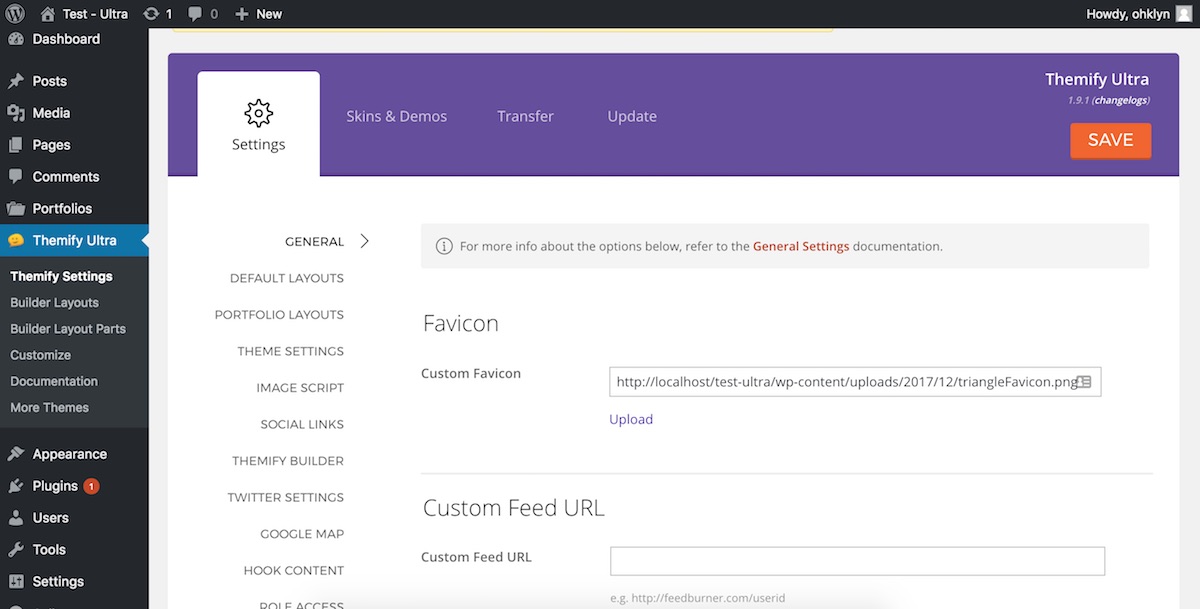
Install and activate required plugins
- Click on ‘begin installing plugin’
- Select the required plugins and click install
- That will install the required plugins
- We’ll click on the option to ‘Return to Required Plugins Installer’
- To activate the plugins we’ve just installed, select the plugins and select ‘activate’
- Once any required plugins are activated, we can either return to the dashboard, or navigate back to the Themify settings by hovering over ‘Themify Ultra’ in the admin menu, and selecting ‘Themify settings’
Upload the demo website content
You’ll notice that there are a number of tabs within the Themify settings panel. These include:
- Settings – this controls the global theme settings
- Skins & demos – allows us to leverage demo content to create a well designed and functioning website in minutes, with just a few clicks
- Transfer – allows you to import and export data for the Themify settings panel
- Update – is used to manage the version of the Ultra theme installed on your website
The tab we’ll look at first is ‘skins & demos’. Here, you have the option to import all the demo content, theme settings, widgets and menus to replicate exactly what you see on the Themify demo sites that can be viewed by:
- Clicking on the ‘view demo’ button from within the ‘skins and demos’ tab below each example
- Or, by heading to the Ultra theme page, and then scrolling down to the demos section and following the link to the specific demo site.
To select one of the skins, you just need to click on the skin you’d like to use and select ‘save’
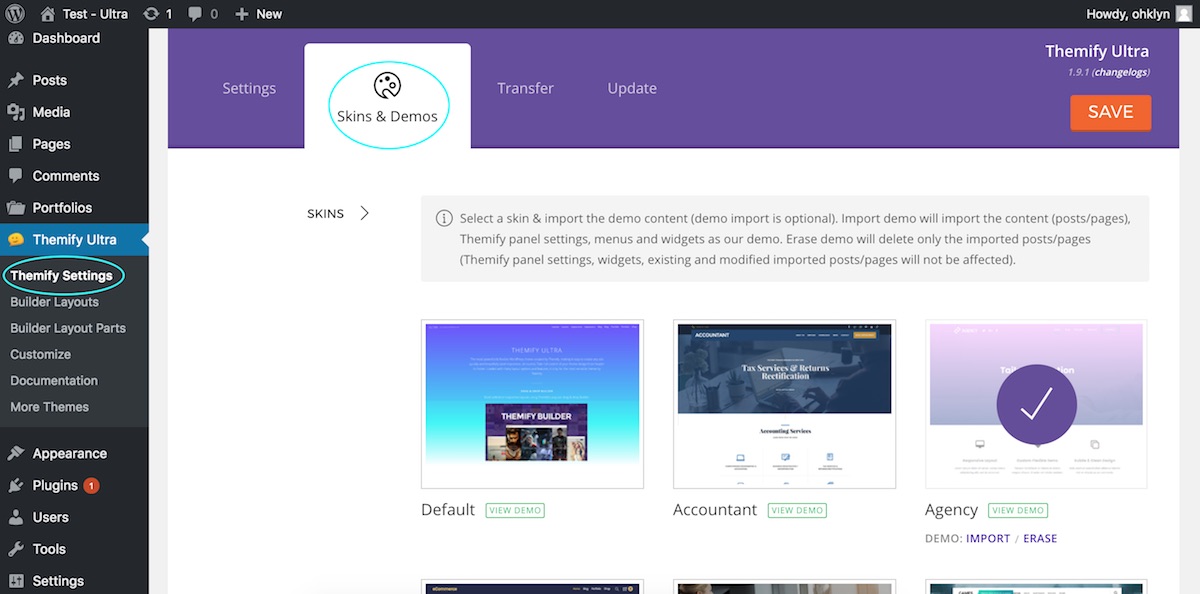
Uploading the demo content
Once you’ve clicked on the skin you want to use, you’ll notice that you get the option to import the demo content. If you’ve already got content on your website, you won’t want to import the demo content.
However, if you’re starting from scratch and you want to use one of the demos as a starting point for your website:
- Then you’ll select ‘import’ to import the demo content into your website
- Depending on which demo you want to import, you will be prompted to download additional Themify builder plugins, which you will have access to as part of your Themify membership
To download the required plugins for your specific demo:
- From the Themify members area, scroll down to the ‘Builder Add-Ons’ section
- To download each plugin required for the demo you want to use, simply click on the specific plugin link to start the download
- Repeat this for every required plugin you want to use
To upload and install the required plugins for your demo:
- From your WordPress dashboard, hover over ‘plugins’ in the admin menu, and select ‘add new’
- At the top of the page, select ‘upload plugin’
- Click ‘choose file’
- Navigate to the .zip file for the first plugin you want to upload, select the plugin .zip file, and hit ‘open’
- Then click ‘install now’
- Once the theme has been installed successfully, select ‘activate plugin’
- Select ‘add new’ and repeat the process for the remaining plugins
Once you’ve installed the required plugins, navigate back to the ‘Themify settings’ panel by hovering over ‘Themify Ultra’, and selecting ‘Themify settings’.
Head back into the ‘Skins & Demos’ tab or refresh the page, and we can now select the demo we want to use. In this case, we’ll go with the agency skin, and click on the ‘import’ option to bring in the demo content for our website.
Ultra theme documentation
Now that you have the demo content imported on your website, we can go through customizing your website. Below are the links to the Ultra theme documentation, Themify Builder documentation, and builder modules documentation
How to Customize your website
So far, we’ve gone through setting up your WordPress website, uploading the theme and required plugins, as well as how to leverage the demo content to get up and running quickly.
In this section we’ll look at:
- How to create pages and posts
- How to create and manage menus
- How to update your WordPress theme settings (including widgets)
- How to update your WordPress theme Customizer settings, and
- How to use the Themify Builder
How to create web pages and posts
For this tutorial, we’ll create a new page, and set this as the homepage for our website so that you’re aware of how the homepage is set for your website.
How to create a new page:
- From your WordPress dashboard, hover over ‘pages’ in the admin menu on the left. To view all the pages on your website, click on ‘all pages’
- Alternatively to create a new page, click ‘add new’
- You could also hover over the ‘+ new’ option at the top of the page and select ‘page’
- Or, from the All pages tab, click on the ‘Add new’ button at the top
- The first thing you’ll want to do is give your page a name. If you’ve selected ‘post name’ as your permalink structure, this will be used to create the URL for this page. For this example, we’ll call this ‘Landing’
- If you’re new to WordPress, we recommend watching our How to Use WordPress tutorial, where we cover the default WordPress options available when creating pages
- On the right-hand side, you can select if you want to assign a parent page. This will impact the site hierarchy as well as permalink structure. In this case, we’ll leave the default of ‘no parent’
- If we scroll down, at the bottom you’ll see the ‘Themify custom panel’. We’ll go through setting the default global page settings shortly, but you’re always able to overwrite these for individual pages in this section
- We’re going to load in one of the pre-designed layouts, which is a full-width layout with no sidebar, so in the page options tab, we’ll set the ‘sidebar option’ to ‘no sidebar’
- And, we’ll set the content width to full width
- We’ll also select ‘yes’ for the hide page title option
- This will create a clean slate for us to bring in the pre-designed layout
How to add a pre-designed layouts
- Scroll up to the top of the page and click on the ‘Themify builder’ button to launch the front end builder
- If it hasn’t already launched, click ‘turn on builder’ in the toolbar at the top
- In the Themify builder menu at the top, hover over the layouts icon and select ‘load layout’
- You can either search for a specific layout, view the layouts by category, or scroll through the available options
- You can preview layouts by clicking on the search or view icon
- Select the layout you want to use by clicking on the layout
- You’ll be asked if you want to replace or append the layout to the existing page content. Choose the option you want
- And the layout is now loaded into the page
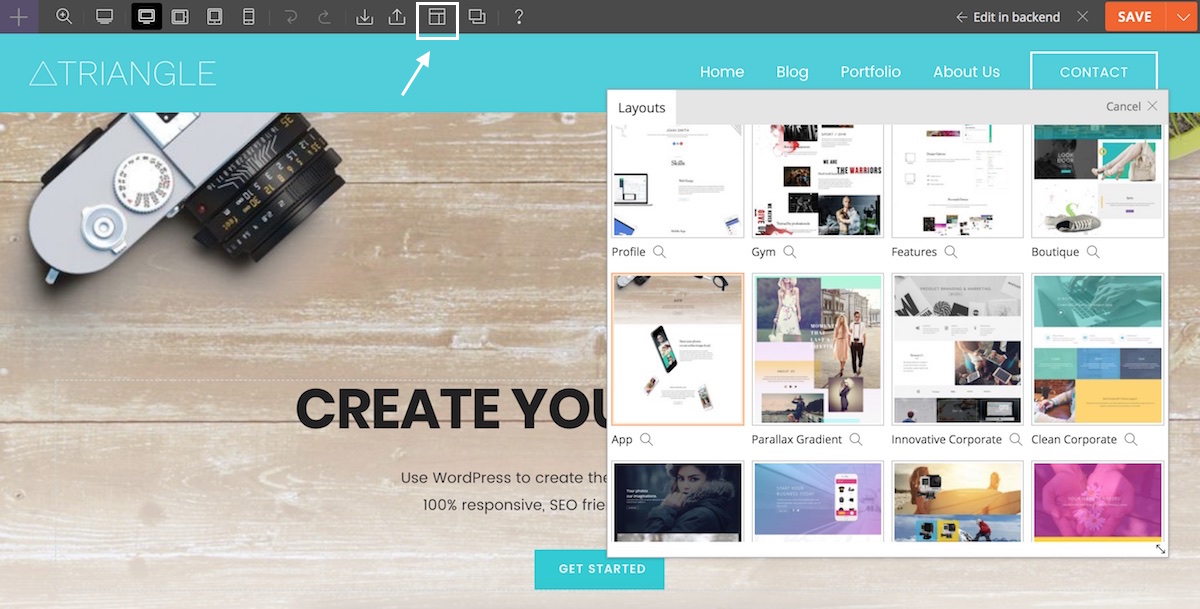
How to set the homepage for your WordPress website
- Hover over ‘Settings’ in the admin menu and click on ‘reading’
- Under the ‘Your homepage displays’ options, make sure that ‘a static page’ is selected, and then choose the page you want to set as your homepage from the homepage dropdown list
- If you go to the homepage of your website, you’ll see that the page you selected is now your homepage
Go through and create the rest of the pages that you want to include on your website by following the same process. Paint in broad strokes for now, as we’ll get to how to use the Themify builder to customize your pages shortly.
How to create posts and categories
If you want to include a blog on your website, you’ll create blog posts the same way. The only difference is that you’ll need to set up categories first.
How to add the blog categories
- From your WordPress dashboard, hover over posts, and select categories
- Enter in the category name
- And selecting ‘add new category’
- Repeat this process for all the categories you want to include in your blog
How to create a blog post
Once you’ve created your categories, to create a new blog post:
- Hover over posts in the admin menu and select ‘add new’
- You’ll add a title
- And your content
- Select the category for the post on the right-hand side
- Assign a feature image by clicking on the ‘set feature image’ option on the right-hand side
- And either uploading an image or selecting one from the media library
- Then, preview or publish your post
The default blog page will feature your recent posts unless you create a custom blog page and set it as your blog page via the reading settings tab like we just did for the homepage.
For more details on anything we covered (or didn’t get a chance to cover) in this tutorial, follow the links below to the Ultra or Themify Builder documentation pages. Here, you can access over 10 hours of detailed content, covering every element of this theme.
ULTRA THEME DOCUMENTATIONTHEMIFY BUILDER DOCUMENTATION
How to create and manage menus
By now, you should have roughly created the pages, posts, and categories for your website. Don’t worry if it’s not perfect or if you’re not 100% sure on the exact structure – remember broad strokes.
What we’ll do now is go and create the menu structure for your website, so you can easily navigate through your website while you continue to build out your layouts and content.
Menus in WordPress are created and managed in the dedicated menus section which you can access by hovering over ‘appearance’ in the admin menu, and selecting ‘menus’.
On the left, you have the available content that you can add to your menu, such as:
- Pages
- Posts
- Custom links
- Categories, etc
To add more options, click on the ‘screen options’ tab at the top and check the boxes next to the elements you want to add to your menu. For example, ‘tags’.
Under ‘screen options’, you can also enable the ability to set the link target for a menu item, which means whether the link opens in a new tab or not, as well as assign CSS classes, which is slightly more advanced than what we’ll cover today.
However, if you’re interested in learning some HTML and CSS fundamentals for WordPress, register for one of our courses at courses.ohklyn.com.
On the right-hand side of the menu panel, you have your menu structure. If you uploaded the demo content, a main menu and a footer menu would’ve been created for you. If not, you’ll need to create a new menu.
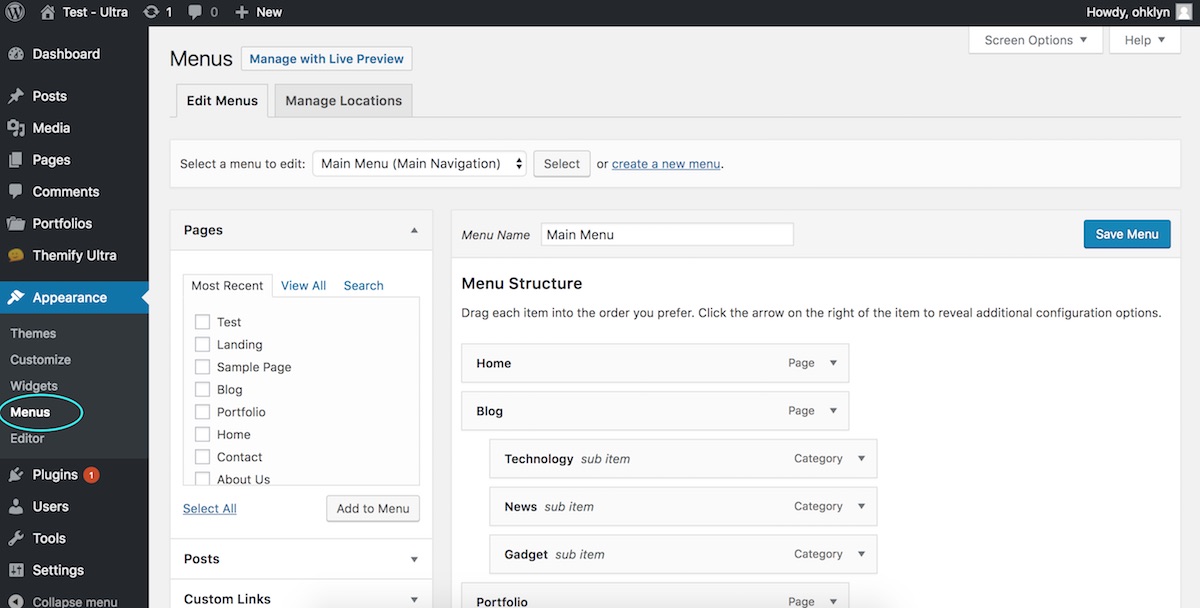
How to create a new menu in WordPress
- Click on ‘create a new menu’
- Enter a name for the menu (this is for your reference)
- Then select ‘create menu’
- Down the bottom, you can select where you want this specific menu to be displayed as either the main navigation menu
- Or the footer navigation menu, located in the footer of your website
- We’ll set this menu as our main navigation menu
How to add menu items to your WordPress menu
- Select the elements from the left
- Then click ‘add to menu’
- You can rearrange the order by clicking and dragging the menu items into place
- Similarly, you can create menu hierarchy by clicking and dragging the menu item across to sit underneath the item above
- Then save the menu
You can also add custom links to your website’s menu. To do this:
- Click on the custom menu link option on the left
- Add the URL for where you want the menu item to link to
- Add the link text that you want featured in the menu
- Then click ‘Add to menu’ and drag it to where you want it to be positioned in the menu
To amend the footer menu, you’ll approach it in the same way:
- By either selecting the footer menu that was created with the demo content and amending the menu items
- Or, creating a new footer menu following the steps we just went through
One great feature of the Ultra theme is the ability to include mega menus which are great from a UX perspective as they allow you to show large amounts of information in an efficient way.
How to add a mega menu in WordPress
- Click on the parent menu item
- Under the mega menu option, select the ‘mega posts’ or ‘fullwidth columns’ option from the dropdown
- And then hit ‘save’
Remember to refer to the documentation for further information regarding the menu options available with the Ultra theme.
We’ll now move on to the global theme settings where we can begin customizing your website to reflect your brand and design style.
How to update your WordPress theme settings
The great thing about the Ultra theme is that there are so many options. What we’ll do in this section is cover the things that will be important to everyone, such as setting your favicon, amending your website’s header and menu layout, and setting the default layout for pages, posts, and other global elements.
To access the Themify settings, from your WordPress dashboard hover over ‘Themify Ultra’, and select ‘Themify settings’. We’ll go through the ‘settings’ tab, and cover off the fundamentals you need to know.
Before we jump into the Themify settings, it’s probably best if we explain a few things first, to ensure we’re all saying the same thing.
As far as published content goes, the basic architecture of WordPress includes static pages, individual posts, portfolio posts, and archive pages.
Static pages are the pages of your website where the content is relatively static. For example, your homepage, about, contact page, etc.
Individual posts are the blog posts you create that are relevant to your business, industry, or niche. Individual posts are grouped by categories which serve as an organization tool and provide additional context and meaning to users. Tags can also be added to individual posts.
Individual portfolio posts are most commonly used to showcase examples of work, or case studies, etc. These function in a similar way to individual posts, where they are associated with a category.
Archive pages are typically the category pages and showcases the individual posts or portfolio posts associated with that specific category. Essentially, these pages act as an archive of associated posts.
For example, if you had an accounting business and included a blog on your website, you may have a category called ‘Advisory’ with a number of individual posts related to relevant issues and strategies that your firm advises on.
If you were to click on the ‘Advisory’ category link on your website, you would be taken to the ‘Advisory’ category archive page, which would display all the posts related to the category of ‘Advisory’. This page is what’s referred to as an archive page.
Ok, so hopefully we’re all on the same page, and we can now run through the Themify settings.
General tab
- Upload favicon – favicon is the icon that appears in the browser tab when a user is on your website. Your favicon image will need to be square, however, it can be a PNG image if you want to include a brand element that isn’t square. To upload your favicon:
- Click on upload
- Add your favicon and select open
- Then click ‘save’ in the top right
- Header code section – allows you to copy code snippets that will be added to the head tag for the pages and posts of your website. This is great for adding Google Analytics tracking code, or your Facebook pixel, etc. If you need to add any code to the head tag of your website, this is where you do it, without needing an additional plugin
Default layouts tab
This is where we set the default layouts for pages, individual posts, and archive pages as we discussed before.
A number of the layout options will include the placement of the sidebar on your website. The sidebar in WordPress is referred to as a widget enabled area and allows you to set a global sidebar that appears on all pages, posts or archive pages – where a sidebar is enabled.
Themify Ultra has two sidebar widget enabled areas that you can leverage – these are the standard sidebar and a narrow sidebar which you can include in your design.
If you’re new to WordPress, review the documentation to get your head around widgets and widget-enabled areas as they are a powerful feature.
Widgets are managed in their own dedicated section which you can access by hovering over ‘appearance’ in the admin menu on the left, and selecting ‘widgets’.
- On the left, you have all the available widgets
- And on the right, are the widget enabled areas
- You’ll see the two sidebar areas, plus the social widget area that sits in the header
- As well as the footer social widget area, that sits in the global footer
If you imported the demo content, there may already be widgets added to the various sidebars and other widget areas.
How to add a widget to the sidebar, or any widget enabled area
- Simply click on the widget on the left
- Select the widget enabled area you want to add the widget to
- And select ‘add widget’
- Once the widget has been added, you can drag it into place
- Click on the widget to amend its settings
- Once you’ve updated the widget, hit ‘save’
To delete a widget, click on the widget, then select ‘delete’
Theme settings tab
Under the theme appearance section, you can control the global appearance settings for your website. These include:
- Theme color & typography – Here you can access the basic settings, however, you have more control over these settings in the theme customizer panel.
- Header design – There are more than 15 header options that will dramatically impact the look and feel of your website. Depending on which header option you choose, the customization settings will vary.
- Footer design – This is where you’ll set your global footer design and widget structure.
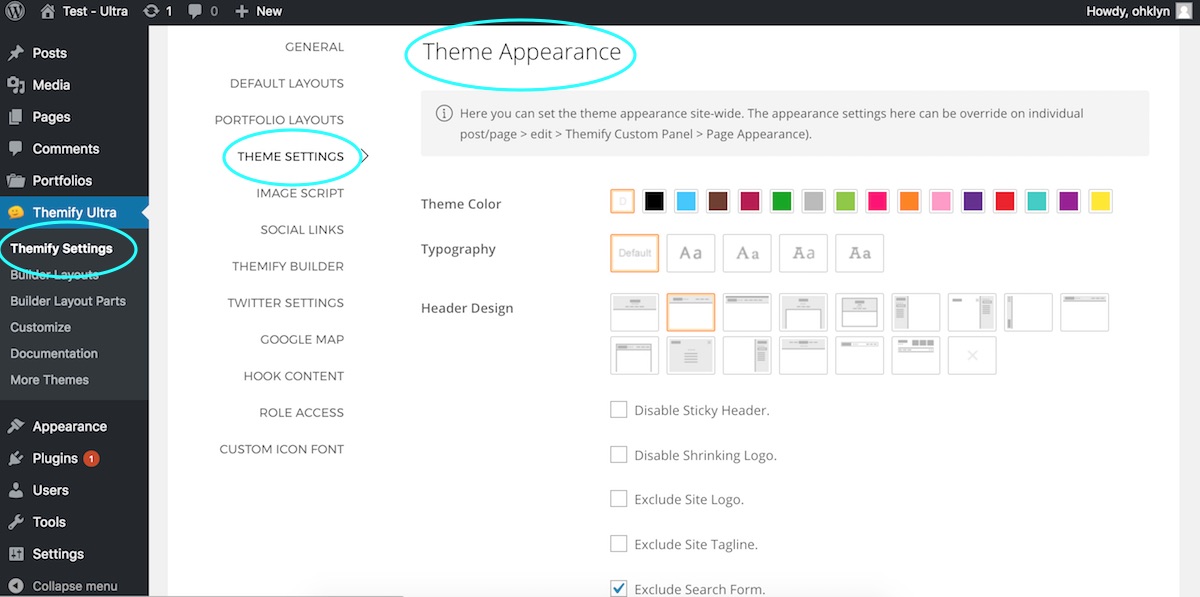
Social links tab
In this tab, you’ll manage the social platforms you want to include on your website, how they’re displayed, and add the links to your accounts.
How to add social media links in WordPress
- Scroll down to the bottom, and select ‘Add link’
- Give it a title, in this case ‘Dribble’
- Add your Dribble link in the link field
- To insert an icon, click on ‘add icon’
- Search for the icon you want to use, in this case Dribble, then select the icon you want
- You can drag the box to rearrange the order
- Then hit ‘save’
To amend the details of an existing social link, just update the details you want to change, for example, the link details, then select ‘save’ to commit the changes.
To delete a social link, simply click the ‘x’ icon, save your changes, and the social link is removed.
Ok, so those are probably the most important aspects of the Themify Builder. However, please go through the rest of the options and refer to the documentation for further details.
ULTRA THEME DOCUMENTATIONTHEMIFY BUILDER DOCUMENTATION
It’s worth noting that within individual pages and posts, you have the ability to override the Themify settings for a specific page, which is a really powerful feature allowing you even more control over the design of your website.
How to update your WordPress theme Customizer settings
The theme customizer is where you have full access over all the global styling options for your website. To access the theme customizer:
- From your WordPress dashboard, hover over ‘appearance’, and select ‘customize’
- You could also hover over ‘Themify Ultra’ and select ‘customize’
- Either way, it will take you through to the theme Customizer
- You’ll notice that the Theme customize panel has two tabs, ‘basic’ and ‘advanced’
- Most of what we need will be in the basic tab, however as the name suggests, we can access more advanced options in the advanced tab if required.
Now, we’re not going to go through all of the options, however, what we will do is go through the most important ones like adding your logo, setting your brand accent colors, and updating the global fonts, etc. so that you have a solid understanding of how to use the theme customizer.
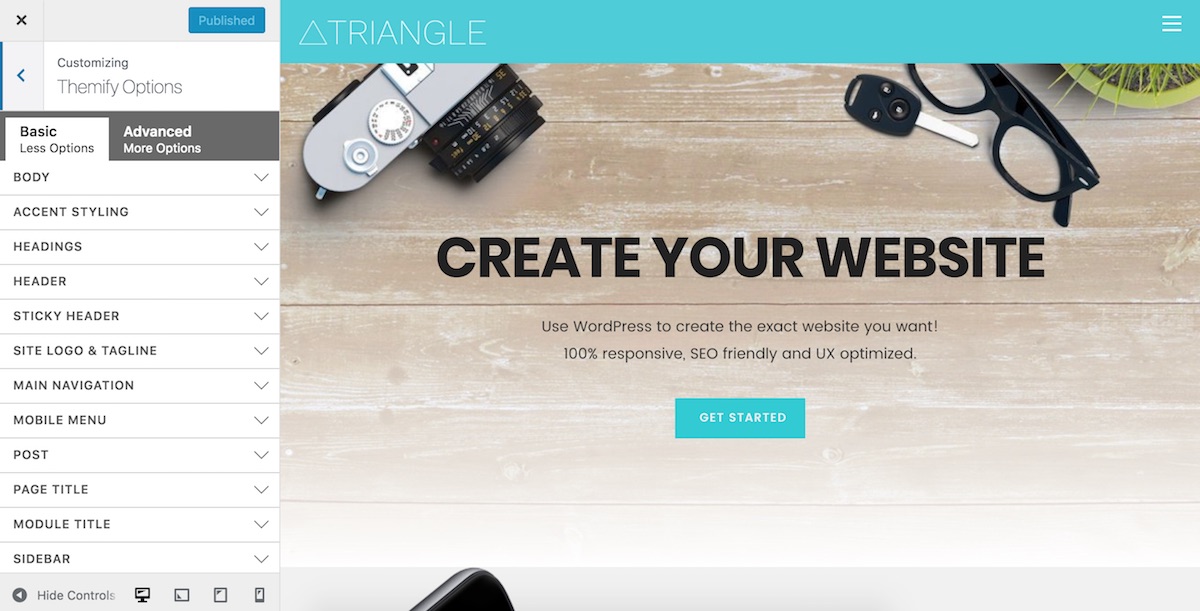
How to add a logo to your website
Let’s take a look at how we can add a logo to your new website:
- From within the Customizer, scroll down and click on the site logo and tagline option
- Here, we can amend the logo and the tagline for your website
- We’ll click on the site logo dropdown
- Here we can choose between using the site title as your logo, uploading a logo image, or setting no logo, we’ll choose the logo image option.
- To add your logo, we’ll click on the plus icon
- We can either upload your logo image, or choose an image from the media library
- We’ll drag your logo to add it to the media library
- Set an Alt text (which is good practice for all images)
- And click ‘insert image’
- This will add your logo to the header of your website
- It’s good practice to set a width or height parameter to ensure your logo doesn’t pixelate or look odd. In this case we’ll set a width parameter of 200px, by adding 200px to the first box
- If you want the logo to take the user to some place else other than the homepage when clicked, you can add a custom site logo link at the bottom
- To commit changes, remember to hit ‘publish’ at the top of the customize panel
How to add brand colors to your website
Scroll up to the accent styling tab which is where you’ll add your brand colors if you want to include them as accent colors on your website. To do this:
- Click on the accent styling options dropdown
- Here we can set your accent font, background, and link color by clicking on the color selector box
- You can either select a color, and its opacity
- Or, enter the hexadecimal or rgba color code of your brand color
- You’ll see the elements this affects in the preview panel on the right. Remember that these are global changes and will be applied to your entire site
- That being said, you are able to overwrite these settings via an individual page’s Themify custom panel, or via the Themify builder itself
- You can amend the header background color and other elements via the header options dropdown by selecting the header wrap option
- You can set the background color in this section
- Similarly, you can amend the sticky header options, by following the same process in the sticky header options panel
- The sticky header is the navigation header that sticks to the top of the page as the user scrolls down the page. This can be disabled via the Themify settings panel as we covered earlier
The best way to get up to speed with all the available options is to have a play around, and see what works best for your design. Reviewing the documentation and video guide for this section is also a great way to explore your options further.
How to update the global font settings
To amend the body and paragraph font:
- In the theme Customizer, click the body options panel
- Then choose the body font option
- Here you can choose from a web safe font, or a number of Google fonts
- Set the default paragraph font size, line height, font weight, letter spacing, as well as a number of stylistic options, and the font color at the bottom
- To commit changes, select ‘publish’ at the top
We can do the same thing to set our global heading styles. To do this:
- We’ll click on the headings option
- Click the heading type we want to amend, for example, Heading 3s
- Then select the font family you want to apply to all heading 3s, by selecting it from the dropdown
- You’ll see in the preview pane, that has now changed, and all the heading 3’s of h3s on the page will have that font applied
- You can also adjust the font weight, line height, etc to get your design looking just the way you want
We recommend setting your global font styles here as opposed to doing it on individual pages, primarily because, if you change your mind later and want to adjust anything, you only have to do it in one place rather than on every page. It will also ensure your design is consistent throughout your website.
Review the customizer tutorial and documentation for more details on any of the settings.
How to use the Themify Builder
To ensure you’re comfortable using the Themify Builder, we’ll go through an example of how to customize one of the pre-built layouts to suit your website design. We’ll also show you how to create a page from scratch using the Themify builder modules and prebuilt rows.
As everyone’s needs will be different, it wouldn’t make sense for us to go through all of the options here. Instead, we’ll cover the fundamentals of how to use the builder, and get you up to speed with the most common features. If you want to dive deeper into anything along the way, refer back to the theme documentation that we’ve provided the links to.
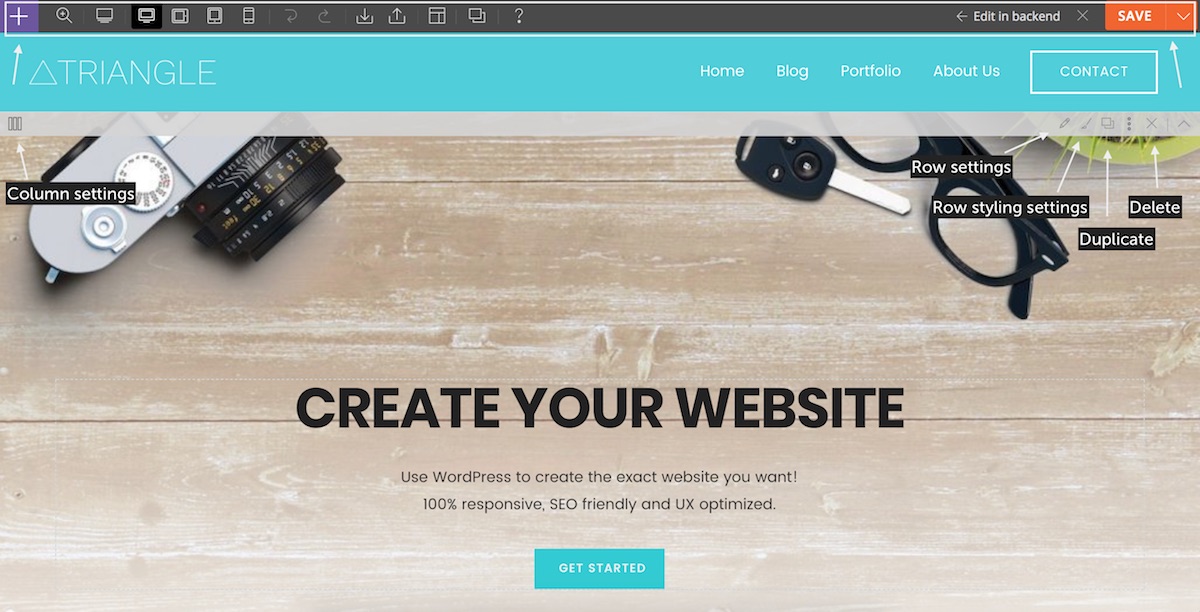
How to launch the Themify Builder
From the backend of any page on your website:
- Click on the ‘Themify Builder’ button
- Then click the ‘turn on builder’ option from the toolbar at the top if it hasn’t launched already. This will activate the drag and drop page builder, which is one of Ultra’s best features.
How to load a pre-designed layout
- In the Themify builder menu at the top, hover over the layouts icon and select ‘load layout’
- You can either search for a specific layout, view the layouts by category, or scroll through the available options
- You can preview layouts by clicking on the search or view icon
- Import the layout you want to use by clicking on the layout
- You’ll be asked if you want to replace or append the layout, select the option you want
- And, the layout will be loaded into the page
How to create a page layout from scratch
Once you’ve created a new page and activated the Themify Builder:
- From here, we can either build a layout from scratch or use one of the prebuilt rows to start your design by hovering over the plus icon at the top, navigating to the ‘rows’ tab and then choosing a specific row
- As an example, you could start your page by using the ‘hero banner’ row
- To add it to your page, click on it and drag it across to the very top of the page, and drop it in
- From here we could customize the elements by double-clicking on the element we want to update, say the title text, for example, adding in a new title, and clicking ‘save’
- In the same way, we could add additional rows. For example, we could add the ‘features’ row by clicking on it and dragging it across
- You could continue down and build out your page by following this approach
Refer to the documentation guide below, or the video included in this tutorial, for more practical and in depth examples.
THEMIFY BUILDER DOCUMENTATIONTHEMIFY BUILDER MODULES
Next steps
When you have your website looking the way you want and you’re ready to launch, there’s a few best practices that you should follow to ensure you get the best results.
If you want your website to be searchable via search engines like Google, the first thing is to ensure that your WordPress settings aren’t blocking search engines from indexing your website. To check this:
- From your WordPress dashboard, hover over settings in the admin panel and select ‘reading’
- Scroll down to the bottom to the Search Engine Visibility section
- Ensure the box is unchecked so that Google can crawl and index your website
Keep this box checked while you’re still working on your site, but uncheck it once you’re ready to go live.
Once you’ve done that, we recommend watching our step by step video on how to index your website using the free Yoast SEO plugin and Google Search Console. This will help make your website discoverable via search engines like Google.
We would also recommend installing Google Analytics on your website. You guessed it, we’ve created a free step by step video on how to do this as well. With the Ultra theme, you can add the required tracking code within the Themify Settings section.
And that brings our how to make a business website tutorial for 2018 to a close. We hope you found this WordPress tutorial helpful, and are well on your way to launching a new website for your business.

